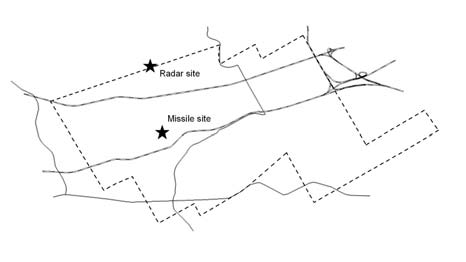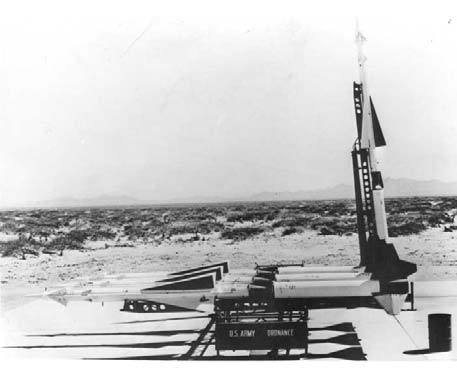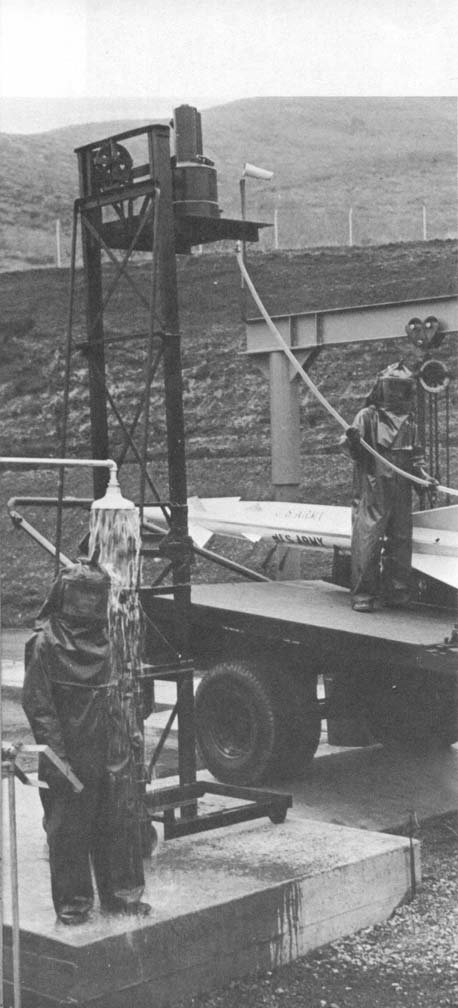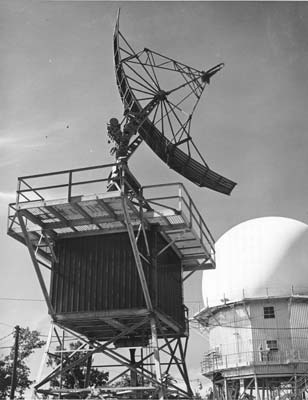|
Home : Quarterly Archives : Volume 44 |
Tredyffrin Easttown Historical Society |
|
Source: Winter/Spring 2007 Volume 44 Numbers 1&2, Pages 69–70 The Nike Base
After the Second World War, the government was concerned about the possibility of a Russian long-range bomber attack on major cities, including Philadelphia. The decision was made to provide a ring of anti-aircraft missiles around these cities. Sixteen Nike missile bases were constructed around Philadelphia. Each base consisted of two parts, a radar system for locating and tracking the aircraft and missiles, and the missile base itself. In the case of Tredyffrin the radars were situated by the Horseshoe Trail on the North Valley Hills east of Diamond Rock Road, in the area now occupied by the Fox Pointe Development. The missiles were located off Le Boutillier Road, near Swedesford Road. The base was on 24 hours-a-day preparedness. The unit had 130 men and 6 officers. The headquarters was on the radar site, as were the main barracks, mess hall, and support personnel. Buses moved the personnel between the two sites. The operating personnel were highly trained, having passed a 48-week training course. When the proposed base was announced in 1954 there was considerable local opposition. Concerns were raised that an “army atmosphere” was not suitable for the area. Once the federal government formally condemned the land the opposition faded away. After the base was activated relations between the base and the neighborhood were amiable. The base personnel helped with tasks such as snow removal in the winter, and a number were scout masters for local troups. The neighbors reciprocated by making tennis courts available for the troops.
Nike-Ajax mille on launch pad Volunteers from the local Red Cross also visited the site to help with housekeeping tasks. The missiles on the site were of the Nike-Ajax type. These missiles were 20 feet long, with an additional booster of another 13 feet. They were stored underground, brought to ground level by an elevator, and then maneuvered into position by the men. There were 3 launching platforms, each with 4 missiles. The missiles were liquid fueled using a mixture of corrosive chemicals. One continuing concern of the neighbors was the possibility of an accident involving the fuel. Luckily there were no incidents. The solid fueled boosters fired for 3 seconds before detaching and falling back to earth in a predetermined booster impact area. The Nike missile had a very limited range, which explains why so many sites were needed around a city. The range was between 12 and 40 miles with a maximum altitude of 70,000 feet. The whole system was based on vacuum tube electronics and analog computers.
Fueling the missile Work was started on a next-generation successor, the Hercules, before the first Nike missiles were deployed. This had a range of 90 miles, used solid fuel, and could be armed with a nuclear warhead.
Nike missile radars This much more powerful warhead was developed with the idea of destroying a whole formation of aircraft, rather than just a single aircraft that was possible with the Nike missile. Most Hercules missiles seem to have been deployed with nuclear warheads. There would be much collateral damage if these missiles were fired, but this was a last ditch defense, trying to destroy the aircraft just before they dropped their bombs. In 1958 it was proposed that Hercules missiles should replace the Nike missiles on the Tredyffrin site. This did not take place, but instead in 1960 the site was transferred to the Pennsylvania National Guard. In 1964 the site was closed down as the base was redundant with the upgrading of other sites to the Hercules system. |
| Previous Article ⇐ ⇒ Next Article |



